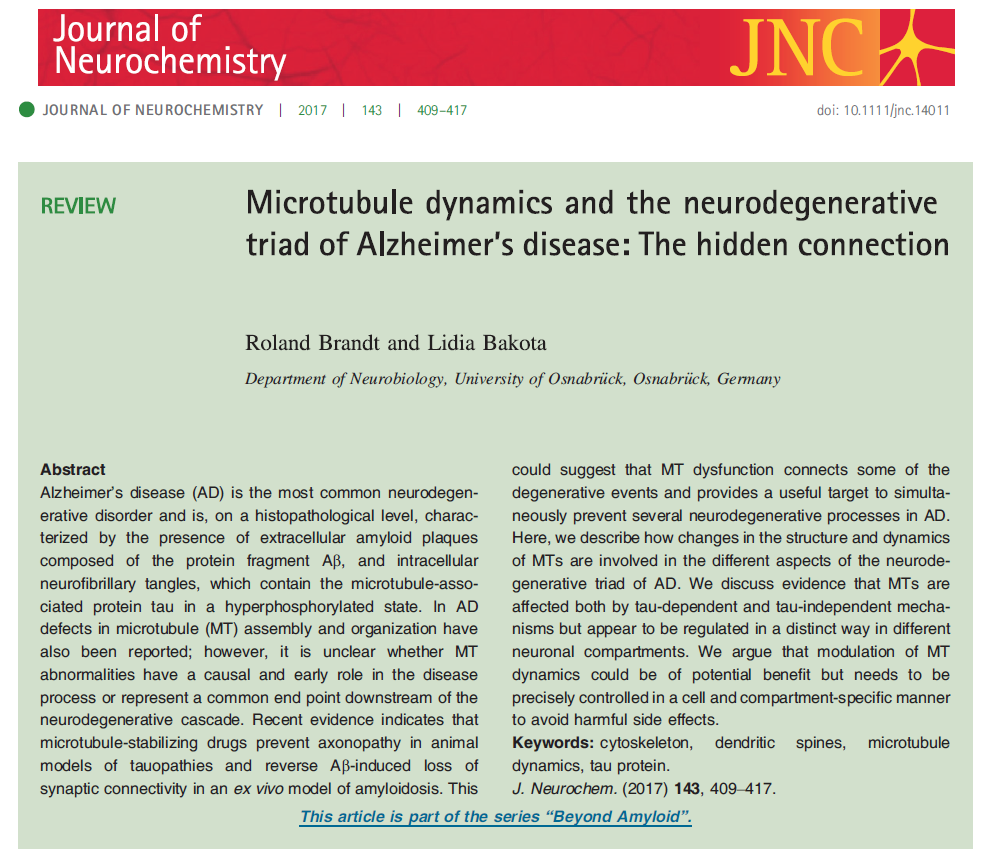Science News
Microtubule dynamics and the neurodegenerative triad of Alzheimer’s desease: The hidden connection
Mag 05, 2020 | News

Alzheimer’s disease (AD) is the most common neurodegenerative disorder and is, on a histopathological level, characterized by the presence of extracellular amyloid plaques composed of the protein fragment Ab, and intracellular neurofibrillary tangles, which contain the microtubule-associated protein tau in a hyperphosphorylated state. In AD defects in microtubule (MT) assembly and organization have also been reported; however, it is unclear whether MT abnormalities have a causal and early role in the disease process or represent a common end point downstream of the neurodegenerative cascade. Recent evidence indicates that microtubule-stabilizing drugs prevent axonopathy in animal models of tauopathies and reverse Ab-induced loss of synaptic connectivity in an ex vivo model of amyloidosis. This could suggest that MT dysfunction connects some of the degenerative events and provides a useful target to simultaneously prevent several neurodegenerative processes in AD. Here, we describe how changes in the structure and dynamics of MTs are involved in the different aspects of the neurodegenerative triad of AD. We discuss evidence that MTs are affected both by tau-dependent and tau-independent mechanisms but appear to be regulated in a distinct way in different neuronal compartments. We argue that modulation of MT
dynamics could be of potential benefit but needs to be precisely controlled in a cell and compartment-specific manner to avoid harmful side effects.
Keywords: cytoskeleton, dendritic spines, microtubule dynamics, tau protein.
https://onlinelibrary.wiley.com/doi/pdf/10.1111/jnc.14011
Written by tubinAD
